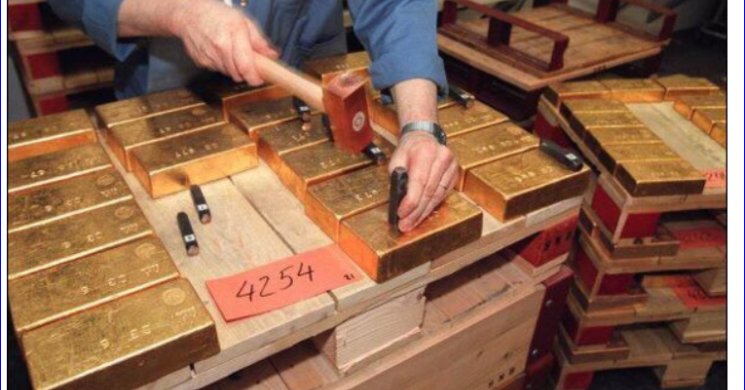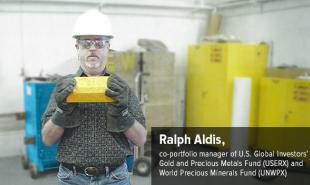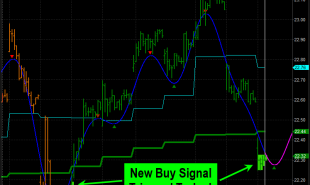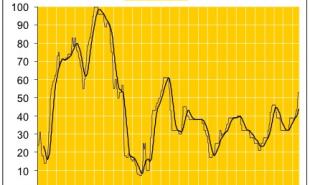
While I personally do not see the facts needed to convict here, and am less inclined to distrust than many I know; it is nauseating that our Gov't feels that we cannot handle the truth. What were little lies years ago, are now likely compounded. And absent the facts needed to make clear decisions, we are left to subjective analysis which encourages all kinds of paranoia.
In law the concept of the 3 legged stool applies frequently when seeking truth and guilt. The most difficult leg to get of the 3 to prove is intent. And the powerful know this. Because intent resides only in the minds of the guilty and can only be discerned with factual evidence of that mental process. otherwise it is all circumstantial. Simply put, the facts are not available to us. And they won't be until the problem is solved behind the scenes (Germany's Gold delay). Usually at our expense.
Do not tell me NOTHING is wrong with how our government is managing its financial affairs. Do not tell me with 100% certainty that all the gold we supposedly have is in its proper place. Stop bullshitting us. VBL
Ruminations on Gold Repatriation
Vince shared his prep notes for the Interview with us. We've reproduced them here to get an idea of the breadth of unanswered questions finally getting some attention
Kitco Interview Prep w/ Daniela
Background: questions raised
1- post 9/11, the scotia vault problem, and the larger reality that even the US was no longer immune to attack, it is logical that nations want to at least diversify their gold holdings geographically.
2- it took very long to get a small amount of gold back to Germany.. and bars had to remelted. Why is this necessary if using segregated bars?
3- in an age of rampant power abuse it makes less sense to store your hedge against humanities shortcomings than ever. Dutch CB statement confirms this
4- ownership is less important than control now. try to get a deadbeat tenant out of a rental property you own... go ask for your IRA in cash tomorrow.
5- took delivery (briefly) of 25 Silver contracts in 1998 - 2000 as a contango play, retendered pre-delivery but learned that physical removal limited at something like 2MM oz [125k lbs?] in a week (reconfirm) - brinks, forklift, time constraints as limiting but not prohibitive factors -"logistics"?
6. - during Clinton years, it was Rubin who approached greenspan and asked him if GS could lease the gold for carry trades. Win win- borrowed gold was sold, that money was used for carry trades and Ft. Knox got some income. and gold was kept down. Finally, Bullion dealers now had Fed by balls if they needed more gold.
The NY Fed has NEVER provided the following:
- – details of the names of the central banks it claims to hold gold
- – how much gold is held by each customer
- – if any of the gold stored in the vault is under lien, claim encumbrance or other title - (I believe it is)
- – if any of the custody gold is lent or swapped - (I believe it is)
- – location swaps and / or purity swaps of gold bars between the NY Fed vaults and other central bank or commercial bank vaults around the world
- - The Eisenhower / Roosevelt coin melt factor.
Additionally
- the fact that Politico derided the WSJ for writing the article as pandering to the lunatics, to me gives it more credence
- The WSJ filed (FOIA)Requests with the NY Fed after it declined to comment. Which means they smell something worth digging into, even if it is just for readership satisfaction... they are doing their job as the persistence of fringe ideas and transparency only add weight to the issue
- Why is the FED's central bank vault linked to a commercial vault run by a commercial bank? lol
Germany
- Why did it take years to repatriate a small portion of the gold that it had at the NY Fed vaults, with much of that gold having to be recast / remelted into new bars en route to Frankfurt in Germany? ( it was on loan or had to be unencumbered is my feel).. the "old gold wasn't up to purity standards' is a canard. How is that our problem? We should have delivered the Gold as is , announce the Gold sent back, and let them resmelt it for BIS standards. Who actually did do the resmelting?
- Germany wanted it all in 2013. The US negotiated a 7 year deal to get it back to them. Delivery before then is not "early" . It is manipulating public expectations.
- In January 2014, the Bundesbank announced that it had repatriated a paltry 5 tonnes of gold from the New York Federal Reserve Bank during 2013.
- if segregated for Bundesbank, there should have been no reason to delay transfer for years.. not to mention remelt gold bars to fill the order
- regarding where the Gold is going now: "The Bank for International Settlements is a repository of expertise in the repatriation of gold. It is a very trustworthy institution," Thiele said. (implies the Fed is NOT?)
- in the new vault: The smelting process is being observed by independent experts. It is set up in such a manner that the Bundesbank's gold cannot be commingled with foreign gold at any time. ( implies that possibly it wasnt being properly segregated i ntheUS)
- there are legitimate reasons not implicating the FRB as playing fast and loose with foreign gold... but with no transparency and actions of foreign banks speaking louder than Fed silence we have doubts.
Custodial Gold
2004: 60 foreign central banks and international monetary organizations
2008: 36 foreign governments, central banks and official international organizations”
If we did not have the gold ready to go, where did it come from?
Here's some very good research from Ronan Manly that answered some of my questions above:
Coin Bars and The Curious Case of the German Bundesbank
There has been widespread coverage of the Deutsche Bundesbank’s attempts to repatriate some of its gold reserves from New York and Paris back to Frankfurt. A lot of this coverage is, in my view, failing to ask the right questions about the fineness of the gold bars repatriated.
In January 2014, the Bundesbank announced that it had repatriated a paltry 5 tonnes of gold from the New York Federal Reserve Bank during 2013.
The Bundesbank press release from 20th January 2014, quoted Bundesbank Executive Board member Carl-Ludwig Thiele as follows:
‘”We had bars of gold which did not meet the ‘London Good Delivery’ general market standard melted down and recast. We are cooperating with gold smelters in Europe,” Thiele continued. The smelting process is being observed by independent experts. It is set up in such a manner that the Bundesbank’s gold cannot be commingled with foreign gold at any time.’
Since the Bundesbank is fond of using the term ‘smelting‘ and ‘smelters‘ in their gold bar discussions, what exactly does ‘smelting’ mean?
SMELT dictionary definition: Smelt (verb):
1. to fuse or melt (ore) in order to separate the metal contained
2. to obtain or refine (metal) in this way.
To me, it appears that the Bundesbank melted down and refined coin bars into London Good Delivery bars, otherwise why else would they need to bring gold up to good delivery standard? After all, normal US Assay Office gold bars of 0.995 fineness are already good delivery. So I emailed the Bundesbank at that time (January 2014) and asked them straight out:
“How many tonnes of coin bars does the Bundesbank hold at the Federal Reserve in New York in addition to the 5 tonnes of coin bar gold recently remelted? And will all the gold (circa 300 tonnes) that is planned to be brought back from New York be in the form of coin bars? Regards,“
The Bundesbank replied, directing me back to their press release:
“in the Link attached you will find more information about your matter. http://www.bundesbank.de/Redaktion/EN/Pressemitteilungen/BBK/2014/2014_01_21_gold_en.html Yours sincerely, DEUTSCHE BUNDESBANK“
Since I had asked about ‘coin bars’ and the Bundesbank had sent me a link to the press release about smelting, could the Bundesbank have been conceding that the smelting was of coin bars? Quite Possibly.
On 19th February 2014, Carl-Ludwig Thiele popped up again referring to the ‘smelting’ operation in an interview conducted with German newspaper Handelsblatt:
“Some of the bars in our stocks in New York were produced before the Second World War.”
“Our internal audit team was present last year during the on-site removal of gold bars and closely monitored everything. The smelting process is also being monitored by independent experts.”
“The very same gold arrived at the European gold smelters that we had commissioned.”
“The gold was removed from the vault in the presence of the internal audit team and transported to Europe. Only once the gold had arrived in Europe was it melted down and brought to the current bar standard.”
The frequent use of the words ‘smelting’ and ‘smelters’, in my opinion, suggests that not only were the Bundesbank’s gold bars melted and reformed into fresh bars, but that the gold was smelted and refined from a lessor purity to a ‘good delivery’ purity. This is why the opaque manoeuvres of the Bundesbank suggest ‘coin bars’.
Thiele’s reference to “some of the bars in our stocks in New York were produced before the Second World War” is again hinting at the 1930s, and to me is clearly suggesting ‘Coin Bars’.
From 5 to 50 tonnes
The 2013 five tonne smelting mystery was merely a prelude to much more of the same in 2014, because in January 2015, the Bundesbank issued a press release in which it claimed to have repatriated 85 tonnes of gold from the FRB in New York, of which approximately 50 tonnes was melted and recast.
Smelting/Melting expert Carl-Ludwig Thiele was again on hand to explain:
“The Bundesbank took advantage of the transfer from New York to have roughly 50 tonnes of gold melted down and recast according to the London Good Delivery standard, today’s internationally recognised standard.”
I then emailed the Bundesbank and asked:
“The Bundesbank press release from yesterday (see link below) refers to the fact that 50 tonnes of gold that was repatriated from the Federal Reserve in New York was recast / remelted before being received by the Bundesbank.
Can you clarify what the gold fineness (parts per thousand of gold in the bars) of these 50 tonnes of bars was before they were recast / remelted?
http://www.bundesbank.de/Redaktion/EN/Pressemitteilungen/BBK/2015/2015_01_19_continues_transfers_of_gold.html”
The Bundesbank replied to my email:
“Please understand that we do not provide any information on the physical details of single gold bars owned by Deutsche Bundesbank. Nevertheless, we would like to draw your attention on the fact that no irregularities where found concerning the gold melted down and recast according to the London Good Delivery standard. Please take into account that this standard asks i.a. for a minimum fineness of 995 parts per thousand.“
(i.a.= inter alia = among other things)
Notwithstanding that I didn’t ask about single gold bars, its very interesting that the Bundesbank mentions 995. Why mention the fineness of 995? If the bars were already 995, why melt them down in the first place?
I then sent the Bundesbank a follow-up email:
“Thanks for the reply but I wasn’t asking about the details of single gold bars.
My question is what was the average fineness of the 50 tonnes of gold bars that the Bundesbank had remelted in 2014. That’s the average fineness on approximately 4,000 bars.
The Bundesbank replied:
“Please understand that we do not provide any further information on the details of specific gold bars or a specific amount of gold bars owned by Deutsche Bundesbank.”
In my view, the Bundesbank’s complete secrecy on this smelting issue speaks volumes. And you also see now that the Bundesbank cannot give a straight answer when asked simple questions about its gold.
In both January 2014 and January 2015, the Bundesbank claims that the Bank for International Settlements (BIS) was in some way involved in the Bundesbank’s gold smelting shenanigans. This makes little or no sense unless there was some type of location swap involved or the BIS has some deal with a refinery such as Metalor in Neuchâtel.
In January 2014 Thiele said:
“The Bundesbank has repatriated the gold from New York City in close cooperation with the Bank for International Settlements. “The Bank for International Settlements is a repository of expertise in the repatriation of gold. It is a very trustworthy institution.”
In January 2015 Thiele said:
“We also called on the expertise of the Bank for International Settlements for the spot checks that had to be carried out. As expected, there were no irregularities.”
The BIS trades gold ‘loco Berne’ using its account at the Swiss National bank (SNB) vaults, and the BIS maintains safekeeping and settlements facilities that are “available loco London, Berne or New York.”
Bundesbank gold looks like it left the FRBNY vaults during 2013 and 2014 in batches of 5.16 tonnes. See the Fed’s foreign earmarked gold statistics here. But on a net basis there is a shortfall of about 32 tonnes in 2014 between the amount of gold that left the FRBNY vaults and the amount of gold that the Bundesbank and De Nederlandsche Bank combined claim that they repatriated from the FRBNY during 2014.
Therefore, there may have been a gold location swap involved somewhere along the line. For some of the Bundesbank’s melting operations, gold may not have moved physically from the FRBNY at all. A gold location swap could have been done between a BIS FRBNY gold account and a BIS SNB gold account. Since the gold needed to be remelted / recast (to bring it to good delivery status), that would mean there were coin bars at the SNB.
The Metalor gold refinery (one of the 4 big gold refineries in Switzerland and one of the 6 biggest in the world) is very near the SNB’s Berne vault. Its located at Neuchâtel, about 50kms from Berne. The three other large Swiss gold refineries are all quite far from Berne as they are situated in southern Switzerland near the Italian border within a mile or two of each other, (Valcambi is in Balerna, Pamp in Castel San Pietro, and Argor-Heraeus is in Mendrisio).
If the BIS did some location swaps between the FRBNY and the SNB, it could get coin bars at the SNB vaults remelted at Metalor and then get the new gold bars flown to the Bundesbank in Frankfurt.
This would prevent the need to fly gold from New York City, and it would explain the “close cooperation” of the BIS in the operations.
Going Dutch
In contrast, that other great gold repatriating nation of 2014, namely the Netherlands, did not see the need to melt any of the bars that it repatriated. In its press release in November 2014, the De Nederlandsche Bank simply said they had repatriated their gold to Amsterdam, apparently in quite a quick fashion.
And why would the Dutch need to melt anything, since after all, their gold in New York was in 995 Melts, as confirmed by Dutch Central Bank official Jan Lamers.
Here is Lamers in 2005 talking about the DNB’s gold bar holdings at the FRB, which were held in normal US Assay Office Melts:
“The New York stock does not meet the standards prevailing on the international gold market, the so-called London “good delivery” standards. The biggest difference is that the bars in New York are not individualized, but are part of a package of about 20 bars, wherein the package as a whole has an overall weight and number. The bars in the package would need to be weighed and numbered individually to meet ‘good delivery’ standards.”
I translated the above, so here is the original Dutch from Lamers:
“De voorraad in New York voldoet echter niet aan de standaarden die gelden op de internationale goudmarkt, de zogenoemde Londense ‘good delivery’ standaard. Het grootste verschil is dat de baren in New York niet zijn geïndividualiseerd, maar onderdeel zijn van een pakket van circa 20 baren waarbij het pakket als geheel een gewicht en nummer heeft. Door de baren in het pakket individueel te wegen en te nummeren, konden deze op‘good delivery’ standaard worden gebracht.”
(Source: “Gold Management of the Bank” by Jan Lamers, Senior Policy, Financial Markets Division. http://web.archive.org/web/20081117183716/http://www.dnb.nl/binaries/goudbeheer%20van%20DNB_tcm46-146095.pdf pages 7-8 of the pdf.)
So, the fact that the Dutch didn’t need to smelt anything but the German’s did shows that the bars that the Germans sent to the European Smelters were not regular 995 fine US Assay Office bars. If the Germans had possessed 995 US Assay Office bars, they would just need to be weighed and individually stamped with their weights, not melted down and recast.
The fact that the Bundesbank will not publish any weight lists is very suspicious. Even the US Treasury published their weight lists of their bars held at the FRBNY (see above).
Peter Boehringer, of the German ‘Repatriate our Gold’ campaign, says that allegedly, the bar lists of the gold that the Bundesbank had melted have now been destroyed. If this has happened, then this is further bizarre behaviour from the Bundesbank.
There are various other theories apart from ‘coin bars’ as to why the Bundesbank may have wanted to melt down gold bars from New York but the other alternatives are also embarrassing to the bar holder.
The old bars may have had cracks or fissures in them. This has happened to some of the old gold that is stored in the Bank of England as this report from 2007 shows. The Bank of England spokesman at the time said:
“This is not about purity, this is about physical appearance.”
Speaking of Peter Boehringer, a recent Bloomberg article from February 2015 about Boehringer and the Bundesbank gold quoted a Bundesbank spokesman as telling Bloomberg, on the subject of gold melting, that:
‘meeting the London good delivery standard “cannot be reduced entirely to the weight of a gold bar but needs to take various other features into account, one criterion being the outer appearance.”‘
However, this Bloomberg article is the first time that the Bundesbank has mentioned ‘appearance’ of bars, and to me it looks like a story that keeps changing, possibly with some inspiration from the Bank of England 2007 story.
Cracks and fissures in 55 tonnes of gold would be quite alarming given that the LBMA said that ‘defects’ are ‘fortunately not typical!’ (see slide 13 here), and this would throw the quality of all the Fed’s New York held gold into doubt.
The quality of US Assay Office 995 fine bars was seen to be less than perfect by London refiners in 1968, as demonstrated by this 2012 article from Zerohedge, but if the Bundesbank was melting down US Assay Office 995 fine bars this would also be an alarm bell for all holders of similar gold. And why would the Dutch not think its necessary to melt down their repatriated US Assay Office bars if the Germans thought this was a problem?
The Bundesbank gives some details of a gold swap with the FRB back in 1968, and claim that a portion of the gold returned to the Bundesbank (the return leg of the gold swap) was gold of a lessor quality than good delivery. They say “the remaining bars with a countervalue of $750 million were of a different quality”. This is absolutely not correct. All of the gold bars returned to the Bundesbank in that potion of the swap were good delivery US Assay Office bars and a lot of it came from Ottawa where the Fed had sourced some bars from the Canadians.
I have the details on that swap from Bank of England gold ledgers and the 1,200 gold bars (sent to Johnson Matthey) out of over 50,000 bars shipped to London were merely being ‘adjusted’ into good delivery bars, and were supposed to be good delivery bars, hence the need to remelt and recast. I will cover this Bundesbank gold swap in a future article. The Bundesbank seems to be using this gold swap as as some sort of ambiguous evidence of why they are melting down 55 tonnes of gold but it is misleading to do so.
So, in conclusion, I would lean towards the probability that the Federal Reserve Bank of New York has given the Deutsche Bundesbank tonnes of coin bars and the smelting operations have been bringing this gold up to London Good delivery purity levels. This begs the question, where did all the other Bundesbank gold bars stored at the New York Fed disappear to?
The alternative to the coin bar thesis, that the Bundesbank does not trust the gold purity of supposedly 995 fine US Assay Office bars, is probably more concerning since it undermines confidence in the purity levels of all US Assay Office fine gold Melts.
full articles HERE
Read more by Soren K.Group









